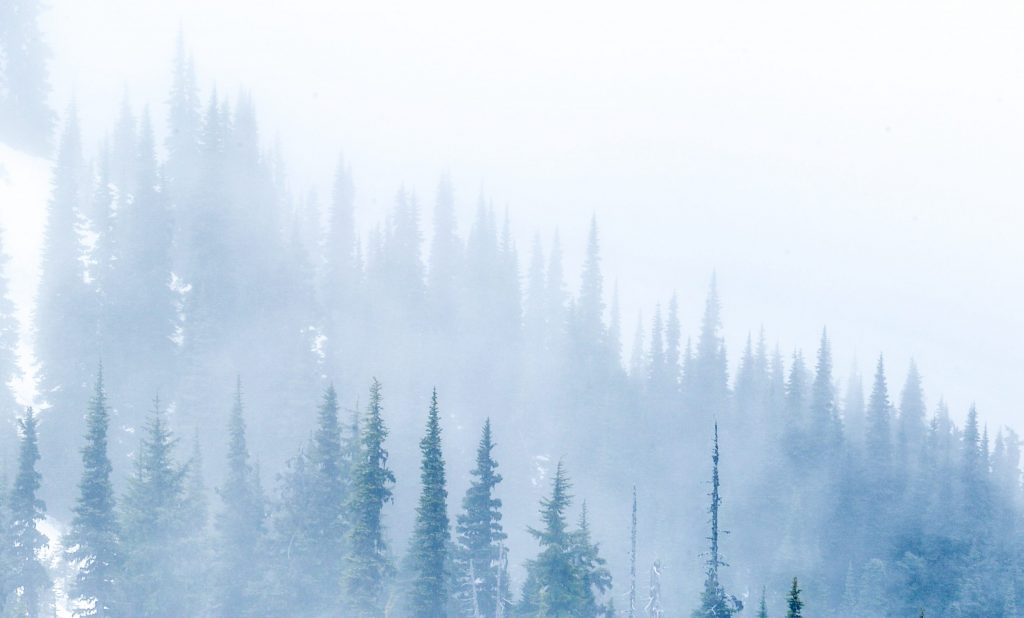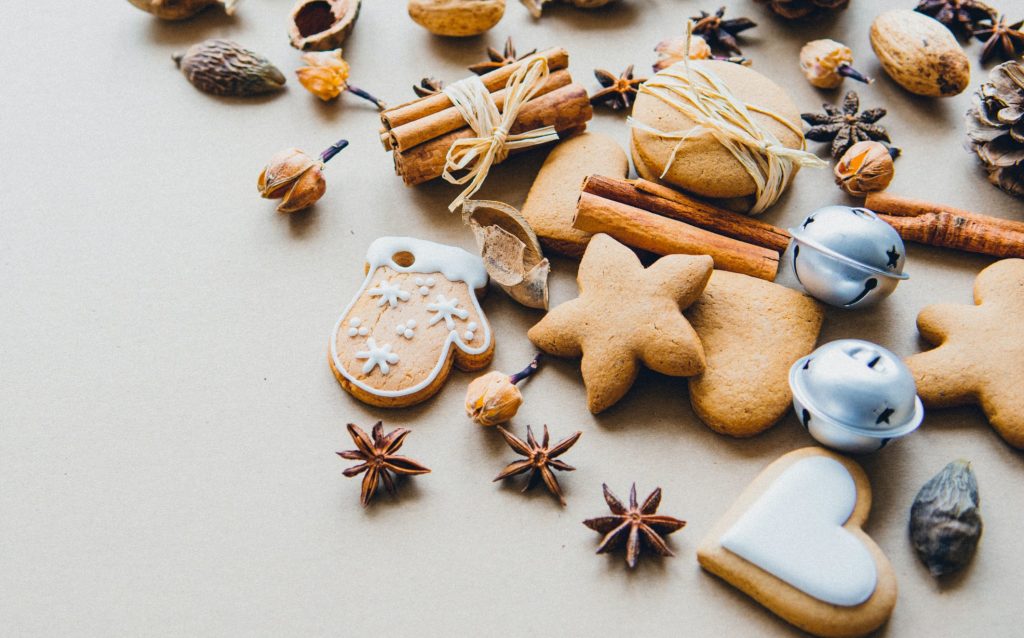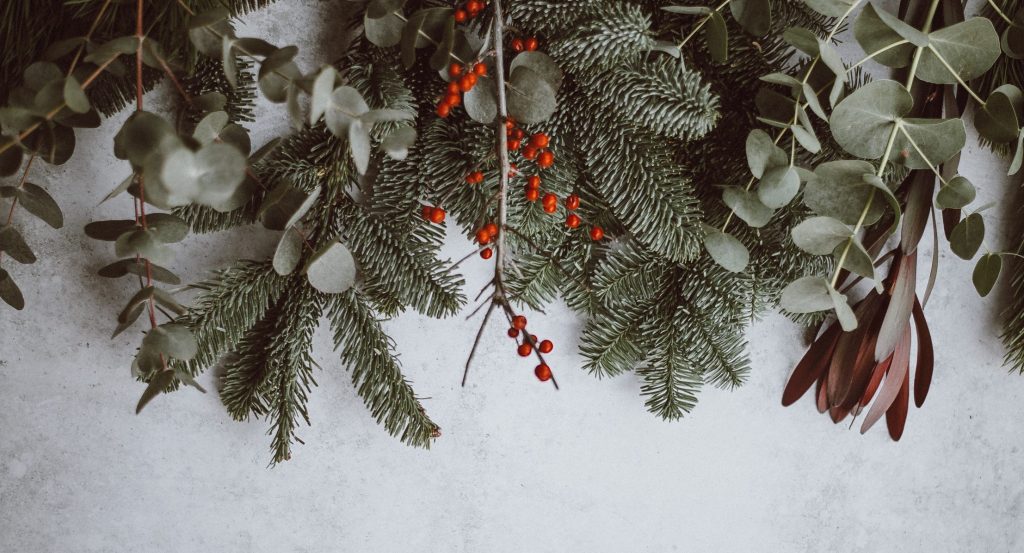The red, the green, the lights,
A kiss under the mistletoe
Oh December,
However do you glow!
Despite the cold winter air (if you’re in the Northern Hemisphere), it’s that time of the year that sparks joy! Christmas décor is all about, there’s freshly baked fruitcakes and jolly old carols fill the air. With the unpredictable year 2020 turned out to be, Christmas will be different, but definitely still celebrated.
However, did you know that December is one of the few months of the year amped with many multicultural festivities?
Here are a few other December holidays from around the world:
December 5-6: Krampusnacht & St. Nicholas Day
Many of us are familiar with the good cop-bad cop scenarios. Similarly, legend foretold that based on a child’s behavior throughout the year, they were either visited by jolly old Saint Nick or the terrifying Krampus.
Saint Nicholas, often depicted with a white beard, was known to generously and anonymously deposit coins into people’s shoes. He was also compassionate with children, gifting them with toys and sweets.
On the contrary, Krampus — the half-goat/half-demon — would swat children with a bundle of birch branches. If they were particularly impish children, Krampus would kidnap them… supposedly to Hell! Krampusnacht (Krampus Night) is often celebrated with skits and a costume parade of people dressed as Krampus and other demented figures. Spectators not participating in events may even be whipped!
The following day, St. Nicholas is celebrated with grand parades. Children often find gifts in their stockings or shoes hang out the night before, and church-goers attend a special mass. It is customary to drink Krampus schnapps, a strong fruit brandy. Fruitcake or rum cake is also common to both days. The celebration ends on St. Nicholas Day with a grand dinner amongst family and friends.
December 8: Bodhi Day
In this fast-paced world we live in, many have trouble finding peace of mind and complete solace with themselves. Nearly 2,500 years ago, the Great Buddha attained enlightenment that many could only dream to achieve. It is said that he sat and meditated under a bodhi tree (hence the name), and came up with the principles that are still followed by Buddhists around the world today.
Rather than a loud fanfare celebration, Bodhi Day is a time to meditate and reevaluate how one lives their life. Often, people decorate a bodhi tree (or even their house) with lights in remembrance of the Day of Enlightenment. Sometimes, beads and ornaments are strung together as decoration, symbolizing the union of all things and the Three Jewels of Buddhism: Buddha, Sangha (community), and Dharma (teachings).
Most Buddhists also visit the temples and stupas (shrines). Milk and rice is significant to this day as it is believed to have been the first meal Buddha had after his reawakening. Tea, cake, and cookies shaped like the bodhi tree are also traditionally eaten.
December 10-18: Hanukkah
Over 2,000 years ago, Judaism was outlawed in Jerusalem and a temple was confiscated. However, the Jewish people successfully revolted and reclaimed it. That being said, Hanukkah is not a celebration that reminisces about this successful revolt, but rather, it is appropriately and alternatively known as the “Festival of Lights”.
To rededicate the temple and cleanse it, the Menorah — a Jewish candelabrum — had to be lit consecutively for eight days but there was only enough oil for just one day. Miraculously, the Menorah did not go out despite the insufficient amount of oil. Now, shortly after sunset, a candle is lit each night of the holiday to remember this miracle.
Children receive gelt (money) based on a four-sided spinning top, called a dreidel, printed on each side with a Hebrew letter that determines the amount. Alongside the games, the festival is also celebrated with a delicious feast of latkes (special potato pancakes) and sufganiyot (jelly-filled doughnuts).
December 13: Saint Lucia’s Day
Winter brings forth the bitter cold and the longest nights. On one special day, young Scandinavian girls dress in white with a wreath of candles adorning their heads. They lead a procession that marks the start of the Christmas season; and also symbolizes light, warmth and hope as once a certain Lucia brought to many Christians long ago.
Saint Lucia was known to aid Christians hiding in secrecy during the Roman rule. She would wear a lighted wreath on her head so that her arms may otherwise be free to carry as much food and supplies as possible. Eventually, Lucia was captured, but her bravery is still recognized and remembered.
Apart from the procession, carols are sung around town and many charitable events are organized to help the needy. Lussekatter (saffron buns) and pepperkakor (ginger snap biscuits) are also distributed for a delightful treat.
December 16-24: Las Posadas
The Nativity story is often retold in many Christmas services held that day. However, in Mexico and other Latin American nations, the story is recounted over a nine-day celebration (the novenario), each day representing the nine months Mary carried Jesus. “Posada” comes from the Spanish term for lodging (or inn), in relevance to the part of the story where Mary and Joseph were seeking shelter.
Las Posadas is really one big fiesta. Communities usually assign nine houses to represent the “inn” for each day. Celebrants proceed to the designated house as a large procession: led by an angel, followed by Mary and Joseph. A traditional posada song is sung to request entry to the “inn” and once granted, a small prayer service is followed.
Afterwards, the host serves the guests with hot tamales, a drink called ponche, and buñuelos (fried rosette cookies). The party is filled with melodious carols, and children can often be seen breaking star-shaped piñatas.
December 21-25: Pancha Ganapati
This holiday is only thirty-five years old, but it emits the same joyous and harmonious celebrations that the winter holidays usually bring forth. Pancha Ganapati honors the Hindu god of arts and culture, Lord Ganesha. It is a five-day festival with each day signifying important aspects of one’s life: family, friends, associates, culture and religion.
In many households, the day starts with a pooja (prayer and worship) in front of a decorated shrine. Rangoli (floor art) may be drawn out, and lamps are lit inside the prayer room. Each day gives celebrants a chance to amend broken ties, exchange gifts, appreciate cultural traditions, and humble themselves through acts of charity.
Young children dress up as Lord Ganesha and sing songs. Greeting cards and gifts are also given to children to be opened on the fifth day. Fresh fruits, sweets, and traditional snacks — like vada — are also eaten.
December 26-January 1: Kwanzaa
Deriving from the Swahili term for “first fruits of the harvest”, Kwanzaa is not a religious holiday nor is it an “African Christmas”. Originating just over fifty years ago, the holiday is a celebration of life, culture, and unity in the African-American community.
A kinara is a special candle holder for seven candlesticks symbolizing the seven principles upon which Kwanzaa was founded. Three candles are red to represent the struggle, three are green to represent a hopeful future, and one black candle represents the people.
Households are usually decorated with cultural works of art or with African cloths like kente (a basket-like pattern). The banquet of food may include of African dishes and fruits like mangoes, bananas, etc. Celebrations also consist of storytelling, singing and dancing. Gifts given are usually homemade, educational or bought from black-owned businesses.

Winter Solstice
The Winter Solstice marks the shortest day of the year; the night dark, cold and long. It is celebrated in many regions around the world as a time of self reflection, community, and the harmonious balance of all things in this universe.
Take a look at how regions celebrate:
December 21: Dongzhi Festival
The Dongzhi Festival is considered the celebration of the Winter Solstice in East Asia. The name derives from the Chinese term for “the arrival of winter”. However, it is much more than the observation of the shortest day of the year. The Dongzhi Festival honors the harmony between the dark, cold qualities of yin; and the bright, positive qualities of yang.
In the olden days of the ancient dynasties, the Dongzhi Festival was a time to pray to the heavens to help overcome the harsh winters and look forward to a bountiful harvest. Now, families gather to pray at ancestral tombs and honor those who have passed on.
Celebrants often hold a hearty meal with families. In Northern China, steamy wontons and hot dumplings are traditionally eaten. Down south, families gather to make pink or white rice balls filled with meat or red paste, known as tangyuan. Taiwan is famous for their nine-layered cake offered to the ancestors.
December 21: Shab-e Yalda
Shab-e Yalda is one of the oldest Persian celebrations that still takes place annually. The term Yalda is Syraic for “birth”; and refers to the birth of the mythological goddess of light, Mitra. Since it is the longest night of the year, many Iranians used to take it as an opportunity to celebrate that light would always prevail over darkness. People also used to stay indoors with family and friends, and try to stay awake as long as possible to keep evil spirits at bay.
Now this holiday can be considered similar to Thanksgiving for Iranians and other Central Asians. Families usually start with a prayer, grateful for the past year and hoping for prosperity in the coming year. Then, they stay up all night laughing and talking, recollecting old and memories alike. It is also customary to recite poems of Divan-e Hafez.
The customary color is red and the dinner table is filled with an abundance of pomegranate, watermelon, permission, dates, and nuts. Herbed rice accompanied with roasted or stewed chicken is a common meal. An alternative light dinner is dolmeh, stuffed grapevine leaves. Baslogh is a soft-starch-based sweet that follows dinner.
December 24-25: Koliada
Long ago, Pagans believed that the Winter Solstice marked the day where the bridge between the living and dead was accessible. The people would light candles, lanterns, and hold a large bonfire to ward off any evil spirits lurking around. Over time, Christianity marked a change in customs and traditions, but Koliada is still celebrated to this very day.
Sometimes, people would dress as a goat, wolf or bear; symbolizing prosperity, protection, and strength. Children would also dress in costumes, going door to door in the neighborhood singing traditional carols and collecting sweets. Games are played amongst celebrants, there is dancing around a bonfire, and the day usually ends with beautiful, bright fireworks.
Traditionally, a twelve-course meal is served for dinner; representing the twelve apostles of Jesus. Truly, a grand feast! It is usually vegetarian — including fish, pickles, vegetable stew, and so much more. Popular desserts include baked apples and kolyadki, a rye flour cookie filled with curd cheese.
Koliada is celebrated on December 24-25 or January 6-7 (region dependent).

As this holiday tour comes to end, we see that some December holidays are boisterous fiestas while others are quiet and peaceful. There’s definitely a holiday for everyone to celebrate with good company, good food, and good spirit.
Happy Holidays to all!
Header: Annie Spratt
About the Author
You may also like
-
Find Your Third Place at an Independent Cafe
-
Lattes & Confessions: Why Cafes Are the New Third Place
-
6 Social Clubs for Black Professionals to Hang Out, Network, and Enjoy Their Free Time
-
Easy Activities to Bond with Loved Ones Around the Holidays
-
Identifying Corporate Sustainability You Can Actually Trust

